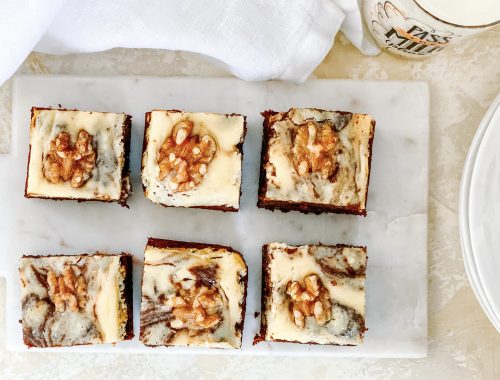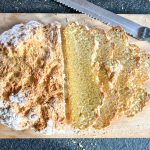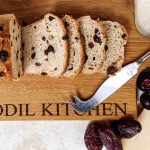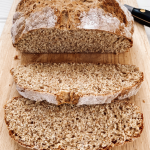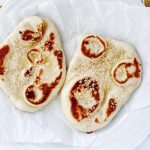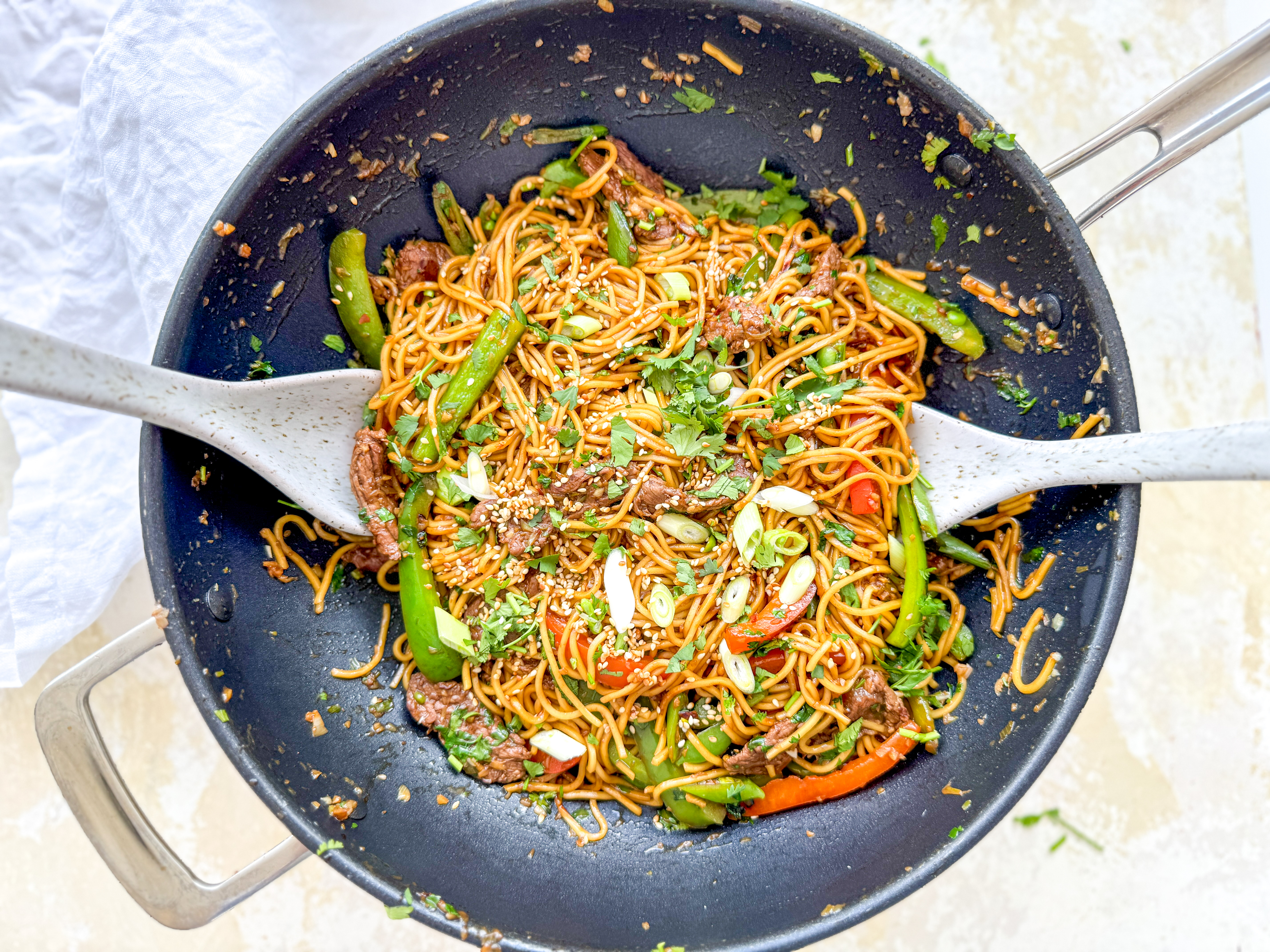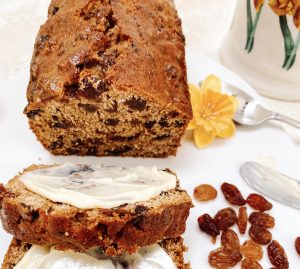
Homemade White Bread
Baking bread is wonderfully therapeutic – there is something very satisfying about creating an artisan bakery version of such a staple product, in no time at all. Not only does it taste better, it costs a fraction of the price of shop bought, the house will smell incredible whilst it bakes and, very importantly, it is not full of preservatives. As a result, it doesn’t last as long, but, to be honest, it doesn’t need to! Obviously, it is best served on the day it is made, but it is so good, it will disappear exceedingly quickly. Fortuitously, if you have any left, it is still wonderful the next day and by the third day, it will make great toast. However, if you don’t want to make such a big loaf, this recipe can be easily halved.
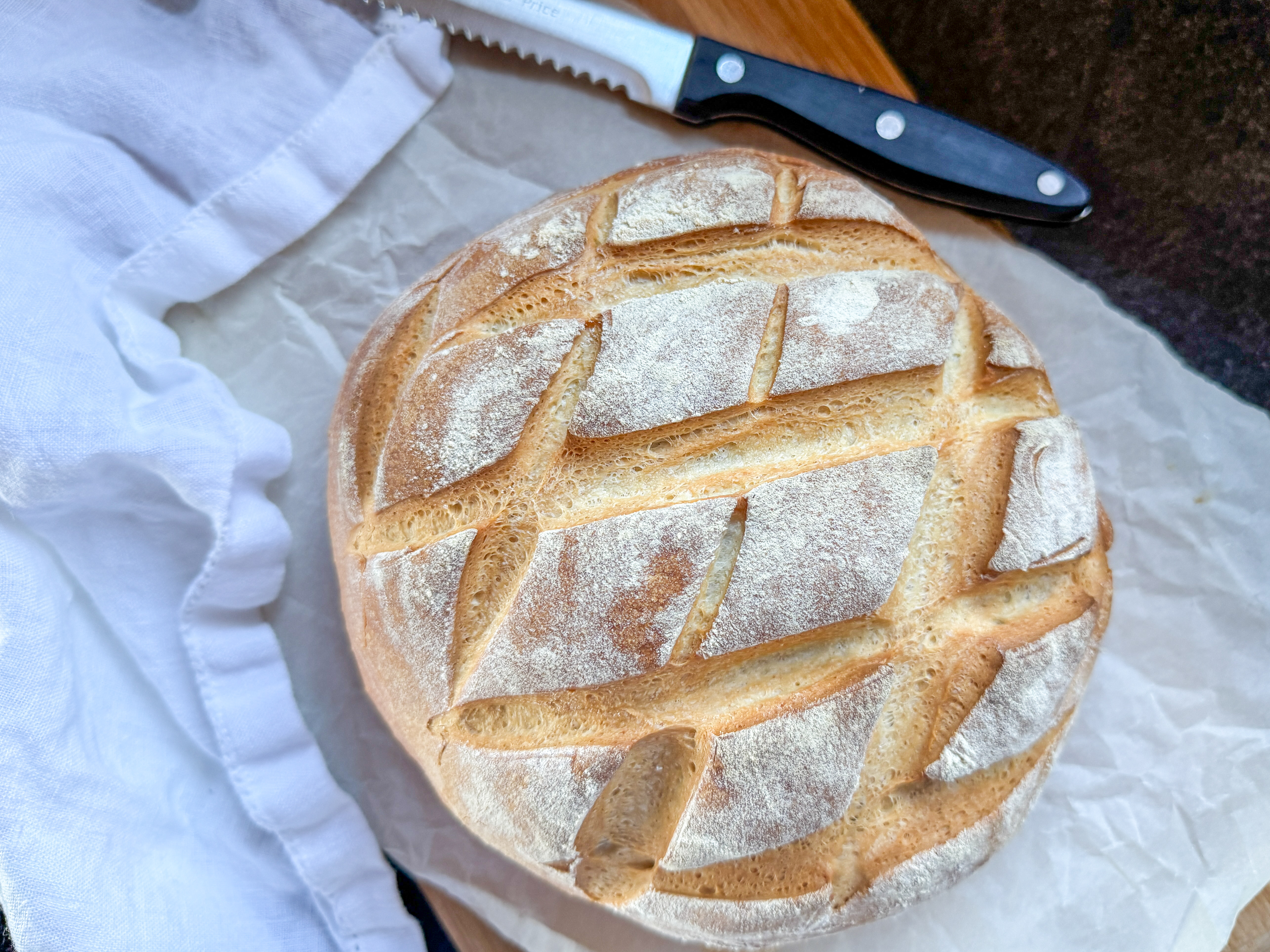
How long does this loaf take to make?
I think a lot of people are put off bread making because of the time it takes. It can take up to 5 hours from start to finish to make this loaf. However, most of this is hands off time. If you use a food processor like I do, the hands on time is minimal: maximum 15 minutes. If you are kneading by hand: 25 minutes. The remainder of the time the dough is rising or cooking. You do need to be around to check on the dough from time to time though, so plan your day, and then it is really very easy.
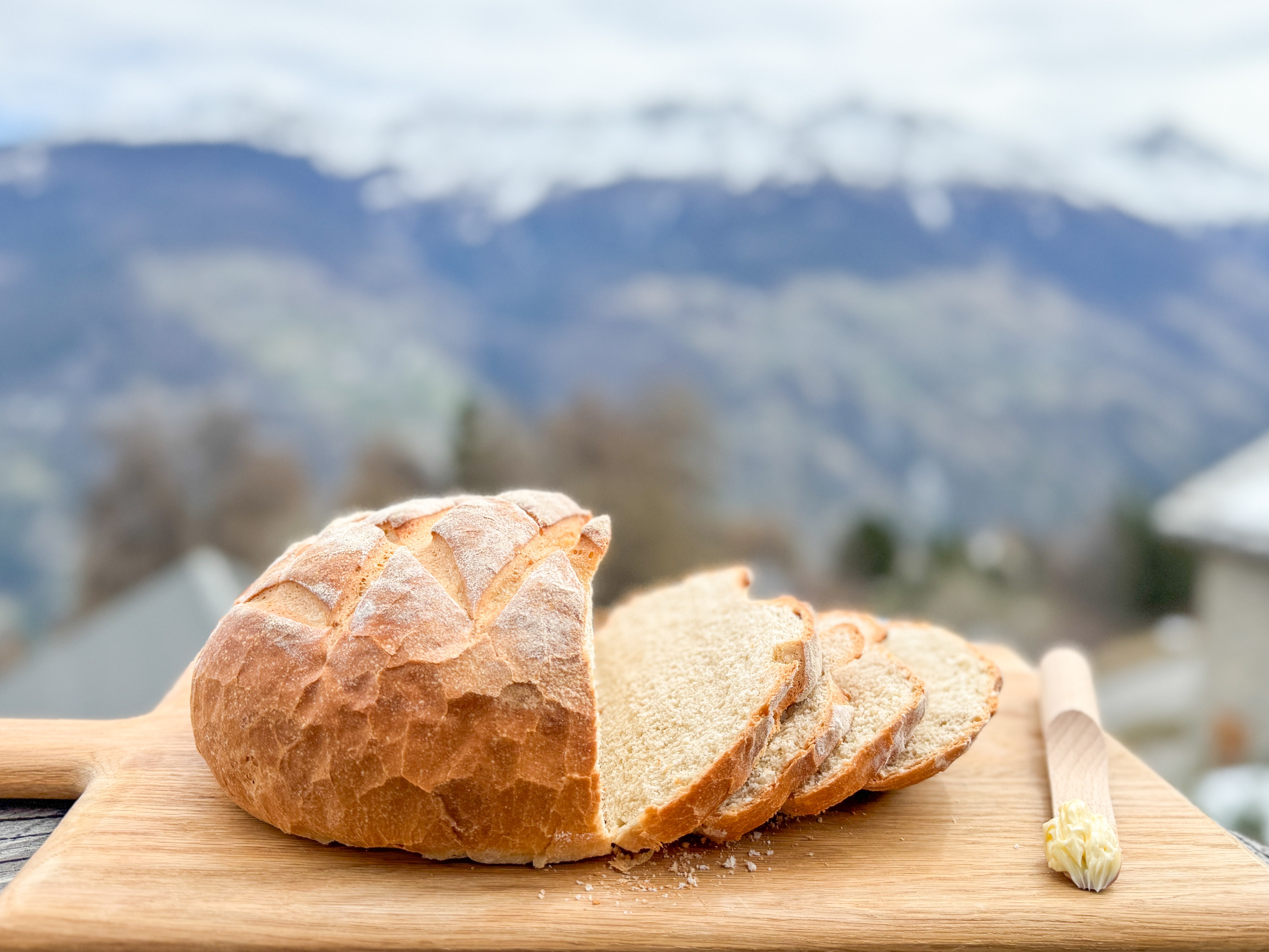
How to make Homemade White Bread
Collect the ingredients together:
- strong white flour, also known as bread flour
- easy bake dried yeast, also known as ‘quick’, ‘fast action’, ‘instant’ or ‘easy blend’ yeast. If you use a differnt type of yeast, follow packet instructions.
- fine salt
- caster sugar – the sugar helps to activate the yeast. The loaf will not be sweet.
- very soft unsalted butter
- luke-warm/tepid water
You will also need:
- oil (to grease the bowl for the dough to rise in). I use olive oil but you could also use vegetable, sunflower or rapeseed
- extra flour for kneading and topping
- water, for cooking
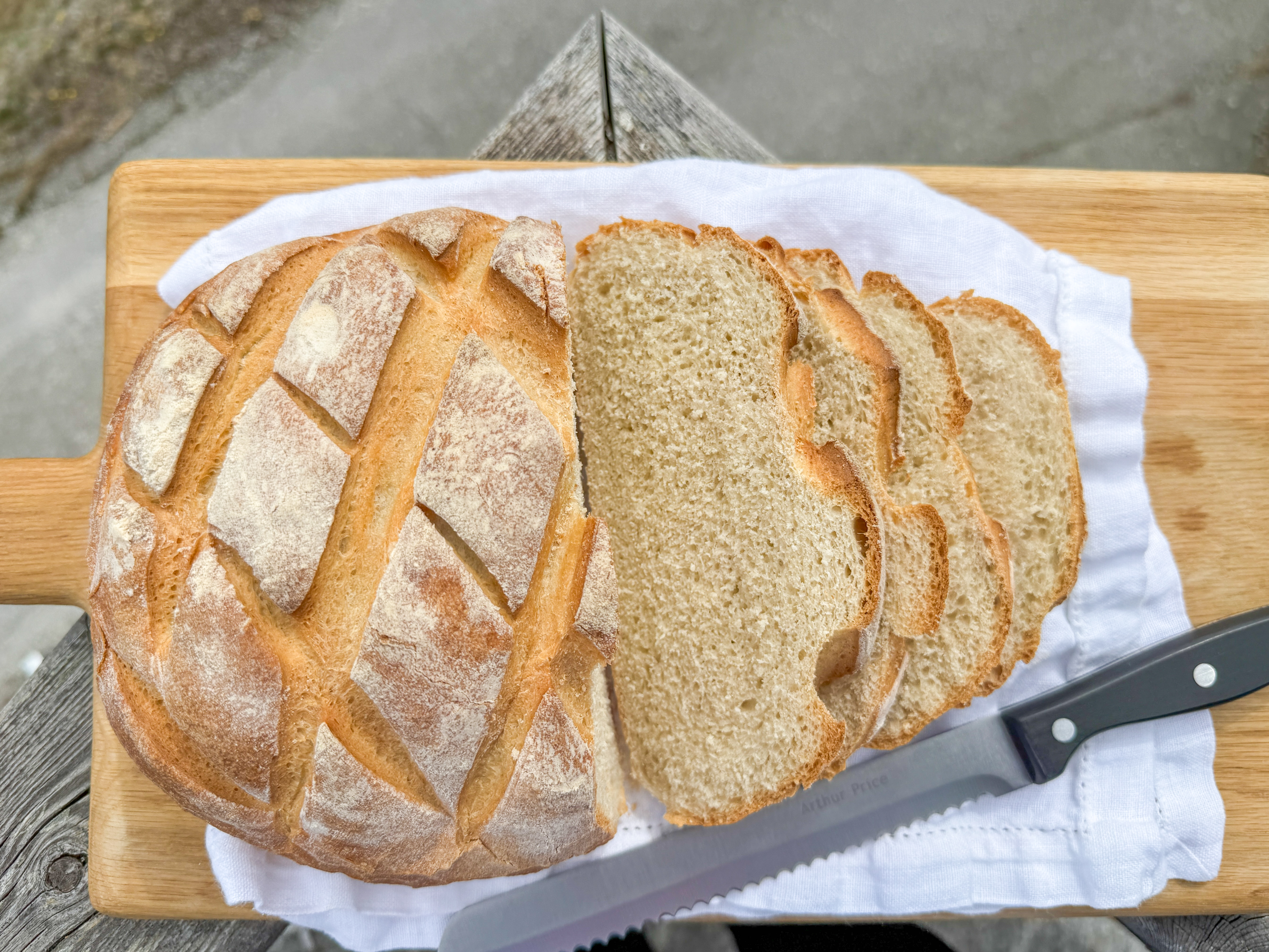
How to make this wonderful loaf:
- Put the flour, yeast, salt and sugar into the bowl of a freestanding mixer with a dough hook. Stir, add the butter and mix on speed 2, or by hand.
- Whilst mixing, slowly pour 300ml water in from the side and continue to mix until everything comes together and forms a rough, shaggy dough – around 2 minutes in a mixer. Check the texture of the dough. If it feels dry, add a little more water.
- When you are happy with the consistency of the dough, continue to mix on speed 2, using the dough hook, for a further 5 minutes, or until the dough is very smooth and comes away cleanly from the side of the bowl. If the dough rides up the hook, take it off and continue to mix. Alternatively, knead by hand for around 10 minutes.
- When the dough is ready, shape it into a neat ball. Lightly oil a mixing bowl large enough to take the dough when it has doubled in size. Put the dough in the bowl and cover with a lid or cling film. Leave to rise until doubled in size. This normally takes between 1- 2 hours depending on how warm it is. If the room temperature is cold, I put mine in the oven set on dough setting at 42°C and it takes around 2 hours.
- When it has doubled in size, lightly flour the top of the dough, knock the dough back with your hand and then remove the dough from the bowl onto a lightly floured work surface.
- Knead to remove the air and then shape into a ball. Place, smooth side up, on a baking parchment lined baking tray, large enough for the dough to double in size.
- Cover with a damp tea towel or lightly oiled cling film, and set aside to rise until doubled in size. This normally takes around an hour. If the room temperature is cold, I put mine in the oven set on dough setting at 42°C.
- 10 minutes before you are ready to bake the loaf, preheat oven to 230°C/450°F/Gas 8 (fan 210°C) and place a roasting tin in the bottom of the oven.
- Before cooking, gently rub the top of the dough with 1 – 2 teaspoons flour. Using a very sharp knife, carefully cut diamond shapes into the top of the loaf, around 1cm deep.
- Place in the centre of a preheated oven and pour ½ litre of cold water into the hot roasting tin. The steam created by this will help to give your loaf a light and crispy crust.
- Immediately lower the heat to 220°C/425°F/Gas 7 (fan 200°C) and cook for 25 – 30 minutes, or until the loaf is golden. Loosely cover with silver foil for the last 5 – 10 minutes if it is browning too quickly.
- Tap the bottom of the loaf, if it is cooked it should sound hollow and feel firm. Leave on the baking tray for a couple of minutes and then remove onto a wire rack to cool.
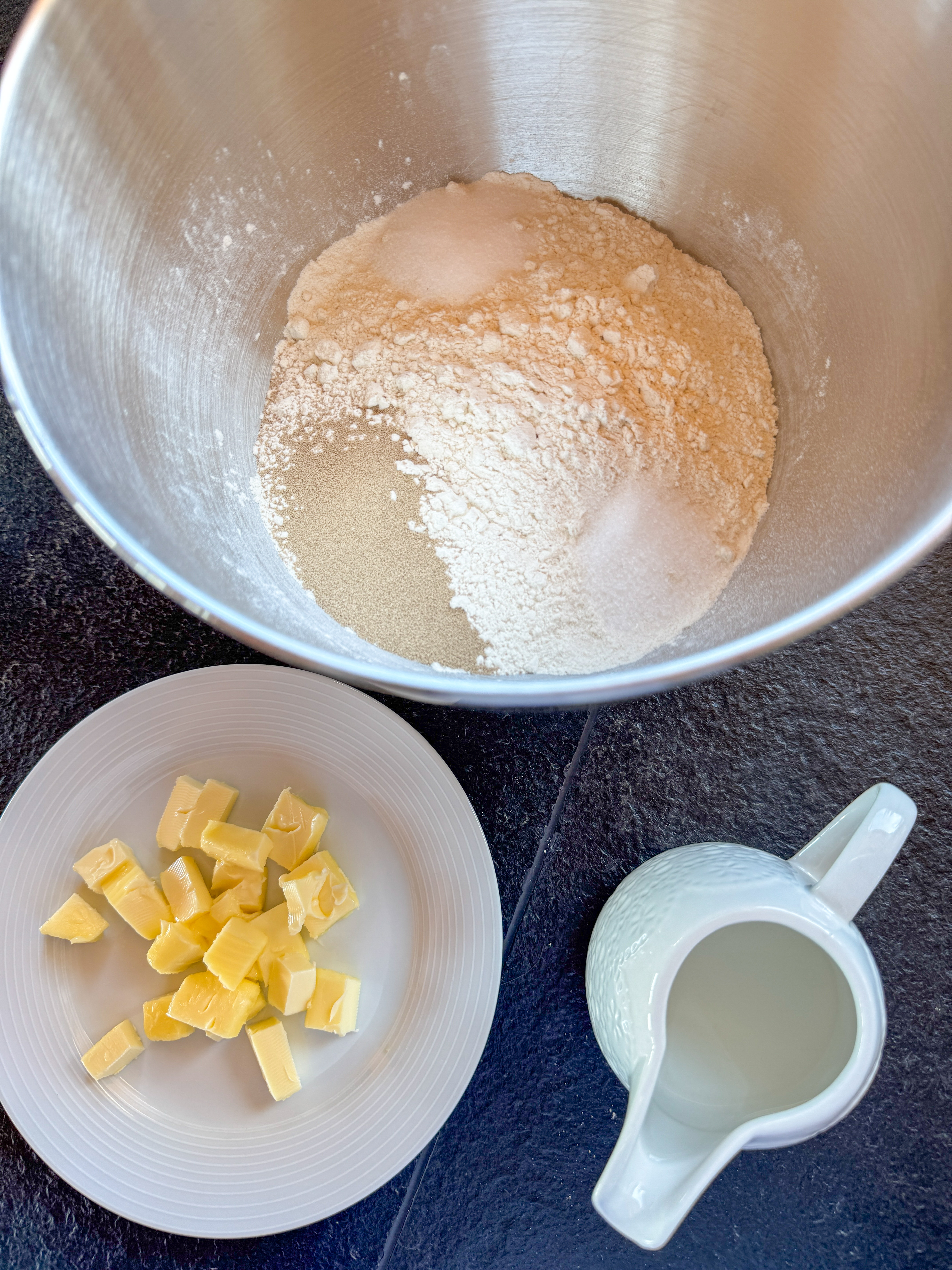
Ingredients 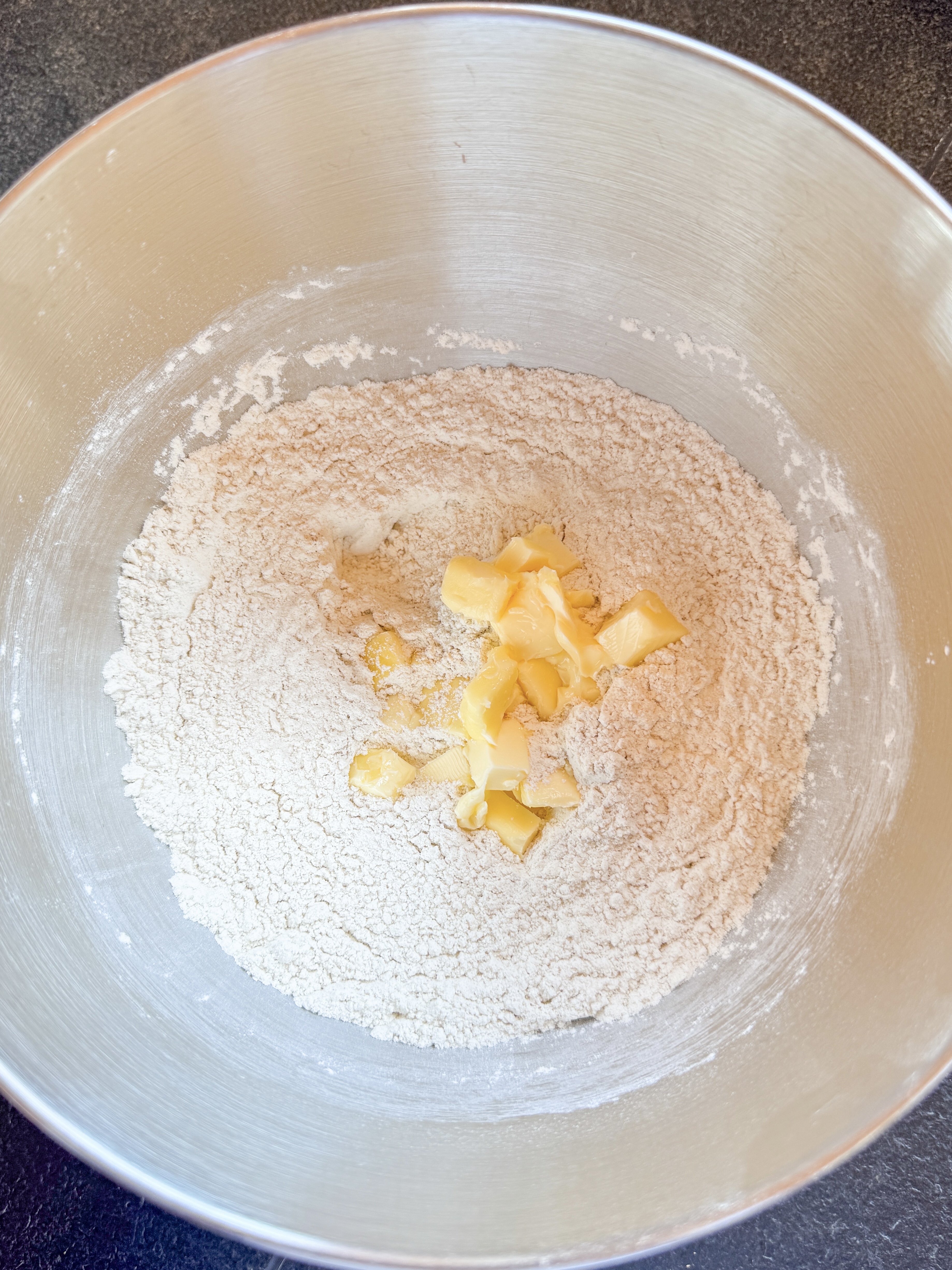
1 Dry ingredients, butter 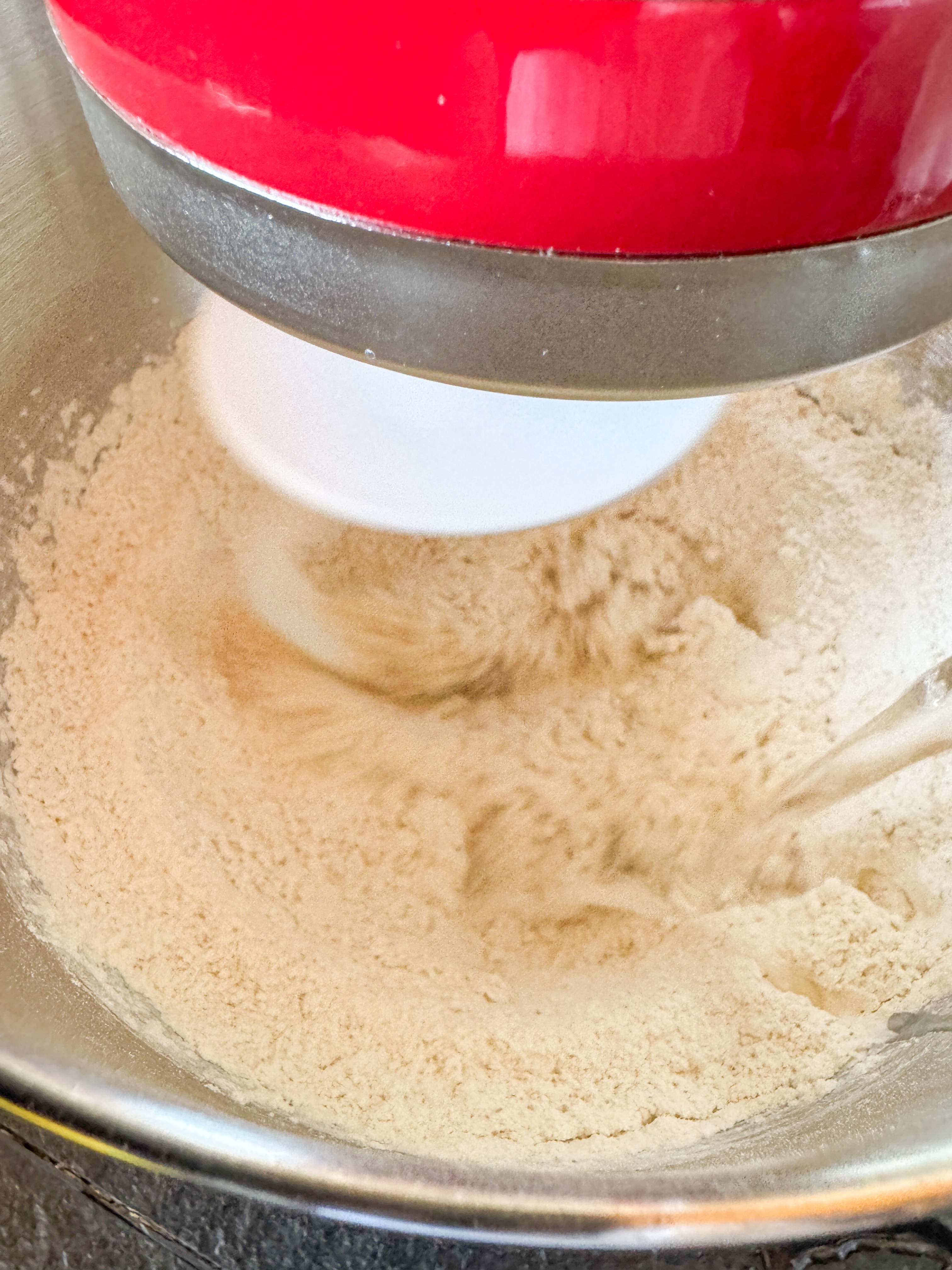
2 Add water 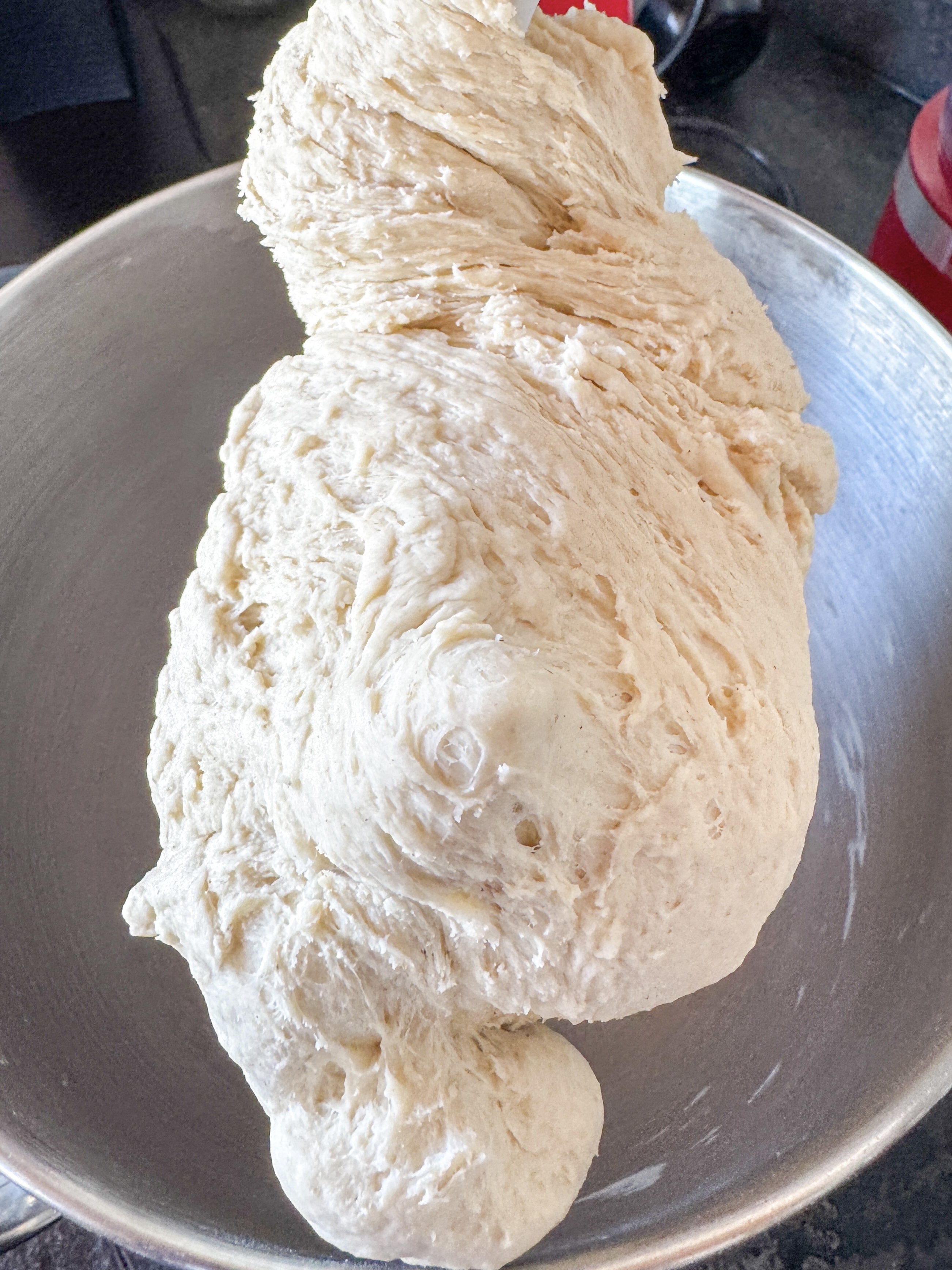
3 Stuck on hook! 
Dough 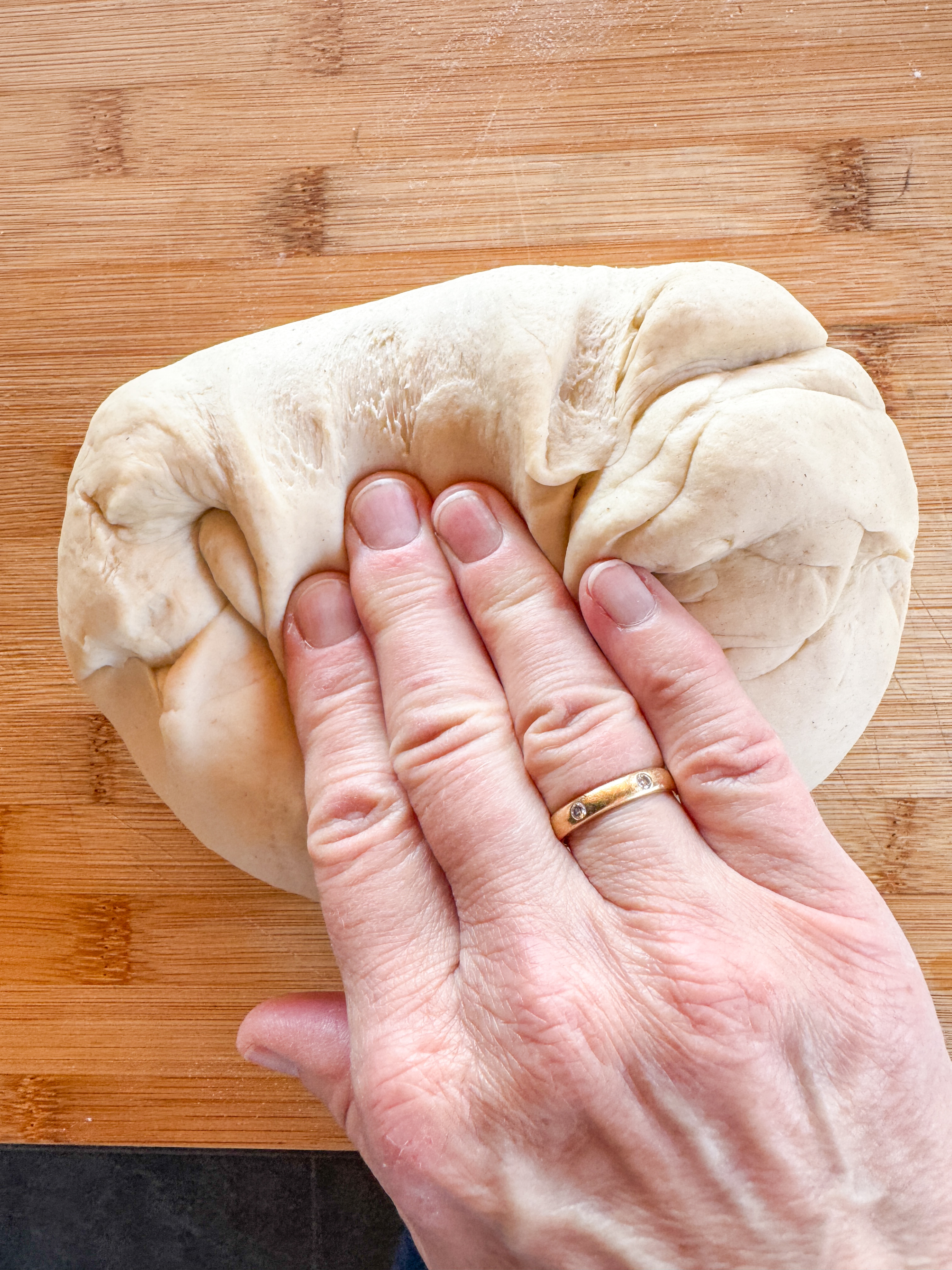
4 Shape 
Cover, leave to rise 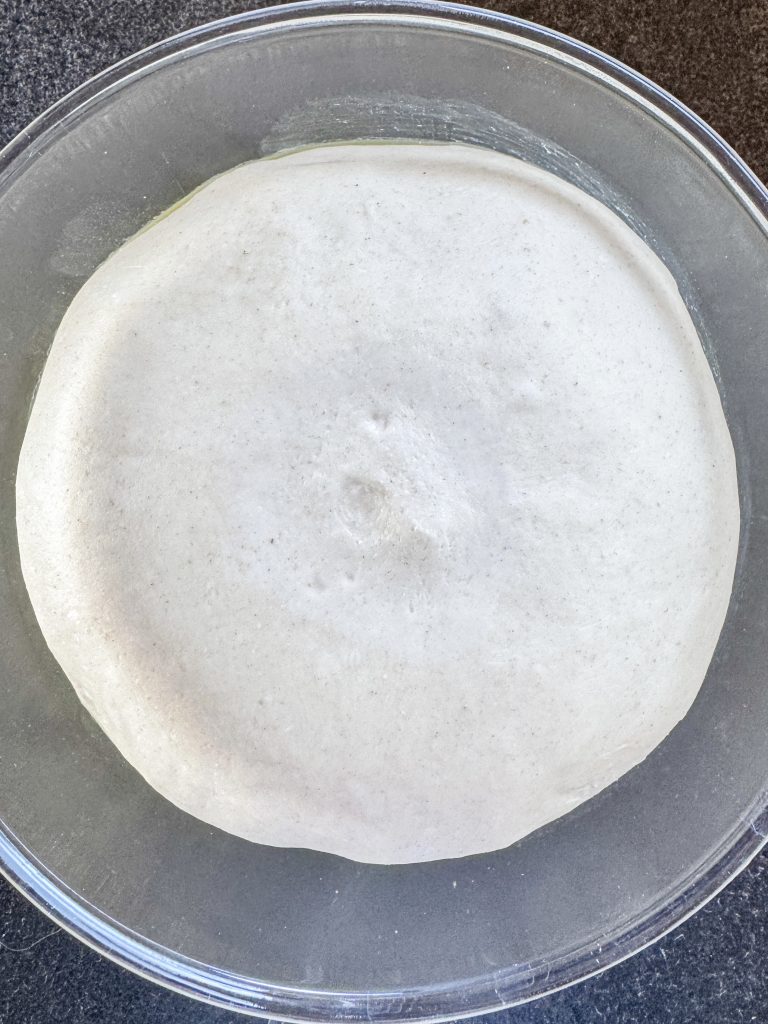
5 Risen dough 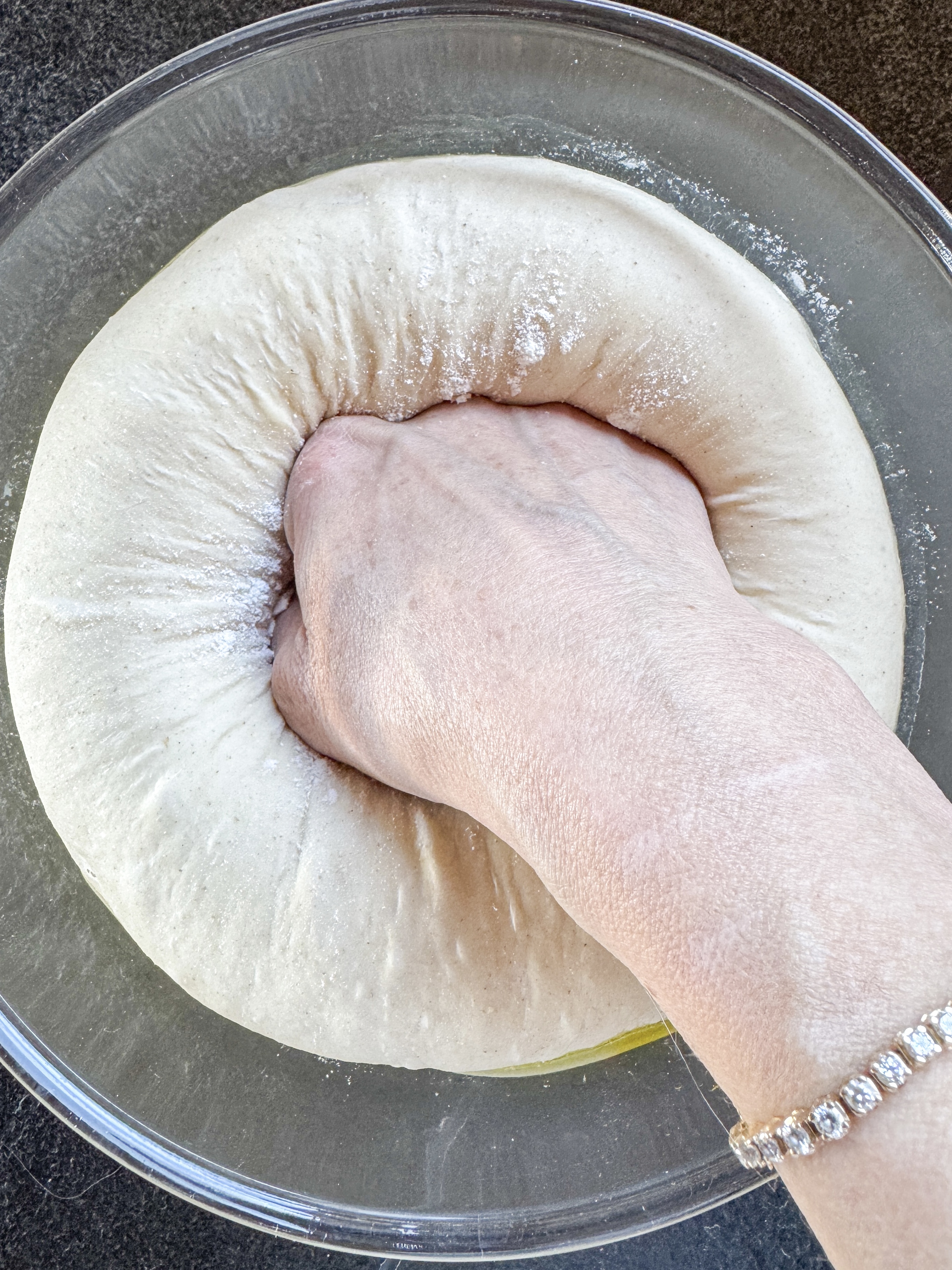
Punch down 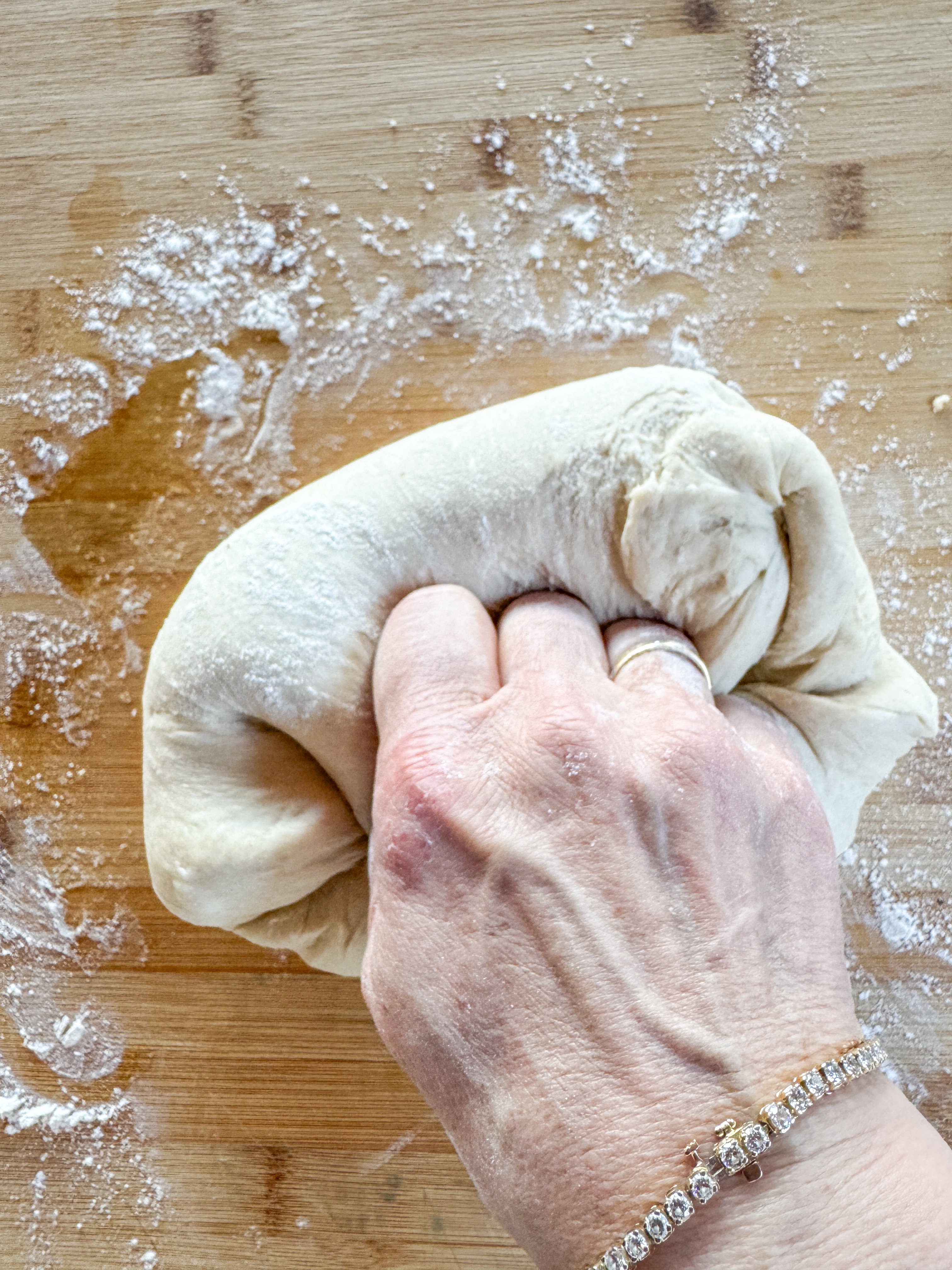
6 Shape 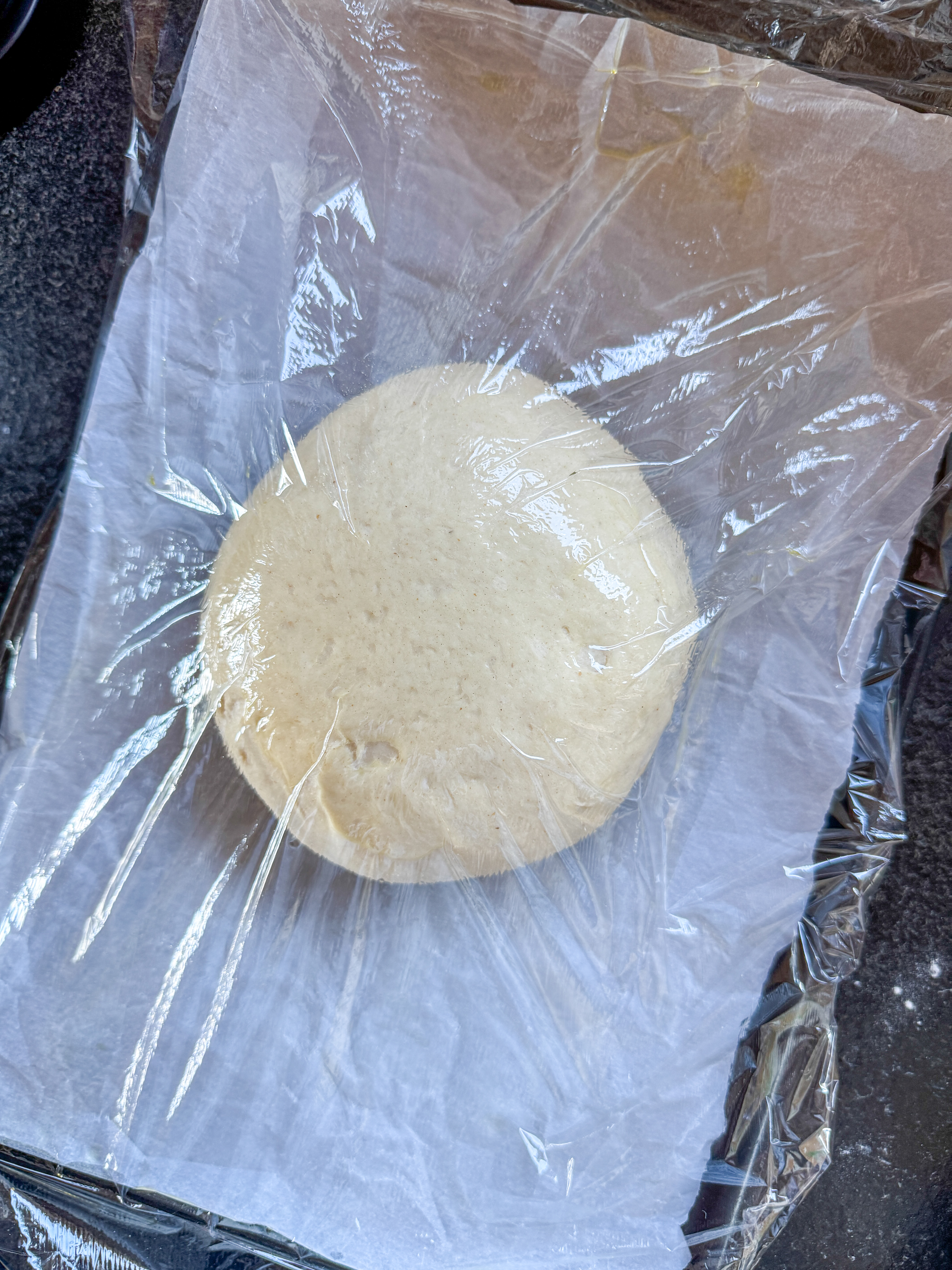
7 Leave to rise 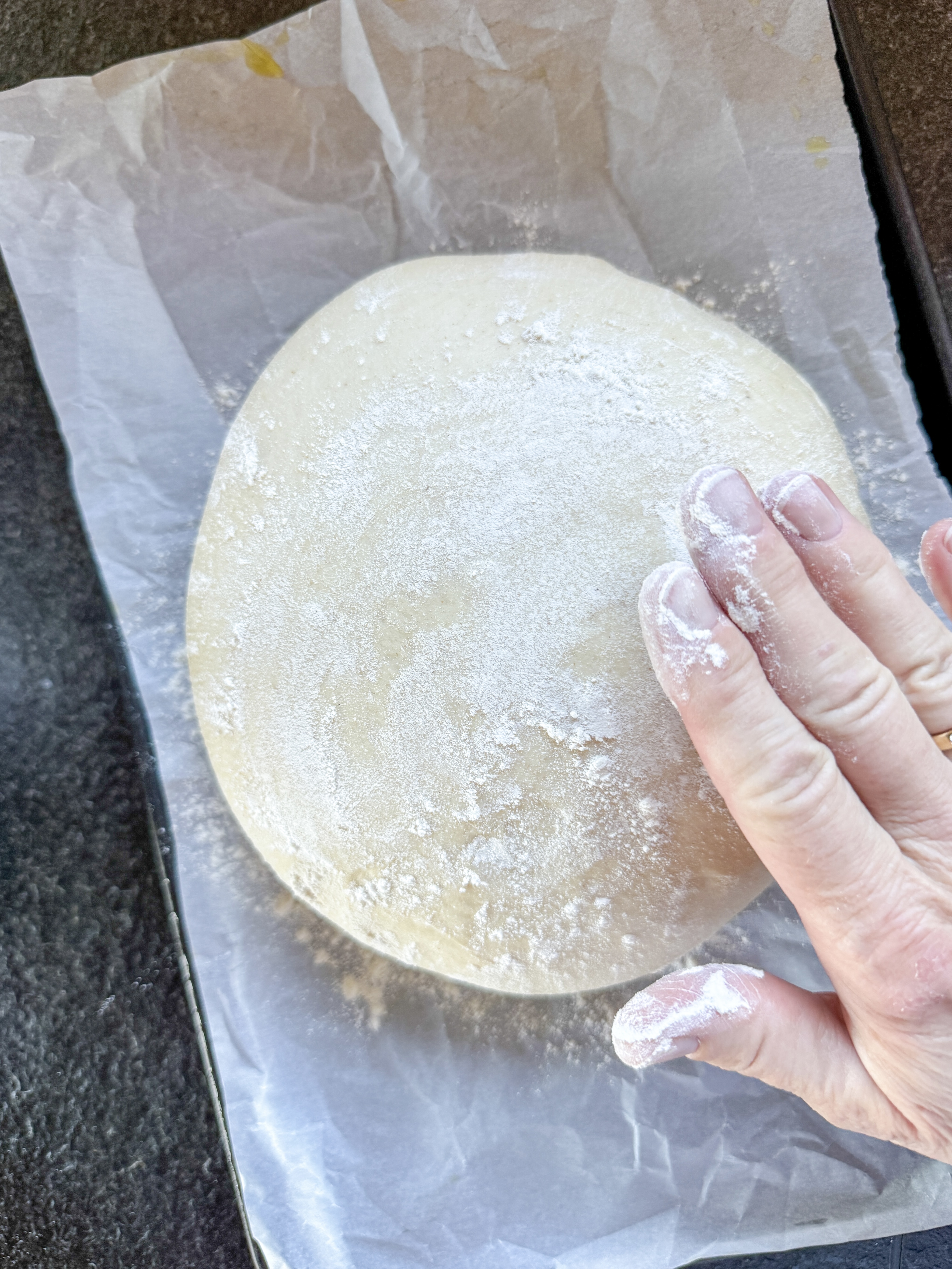
9 Flour 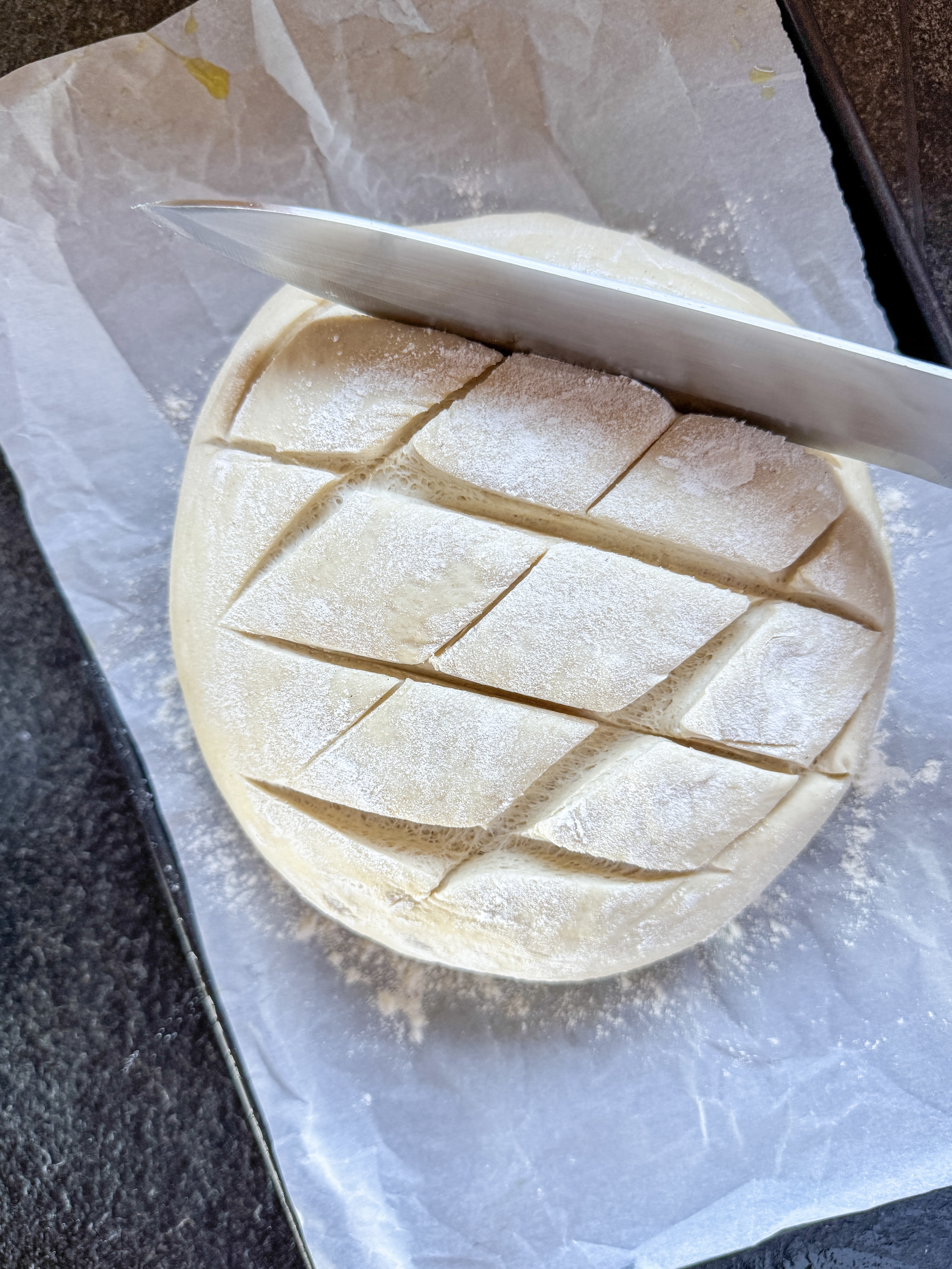
Shallow cuts 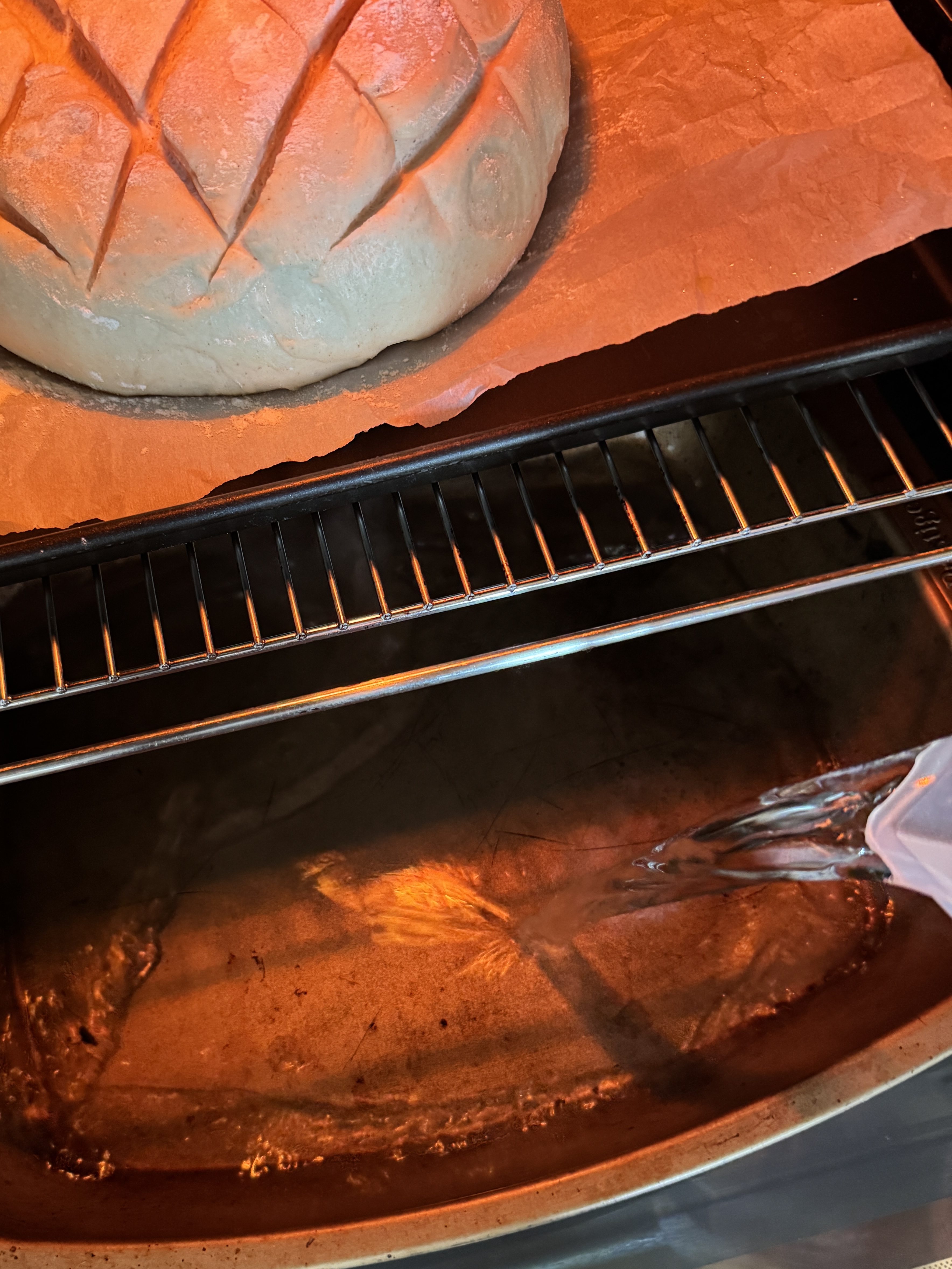
10 Bake 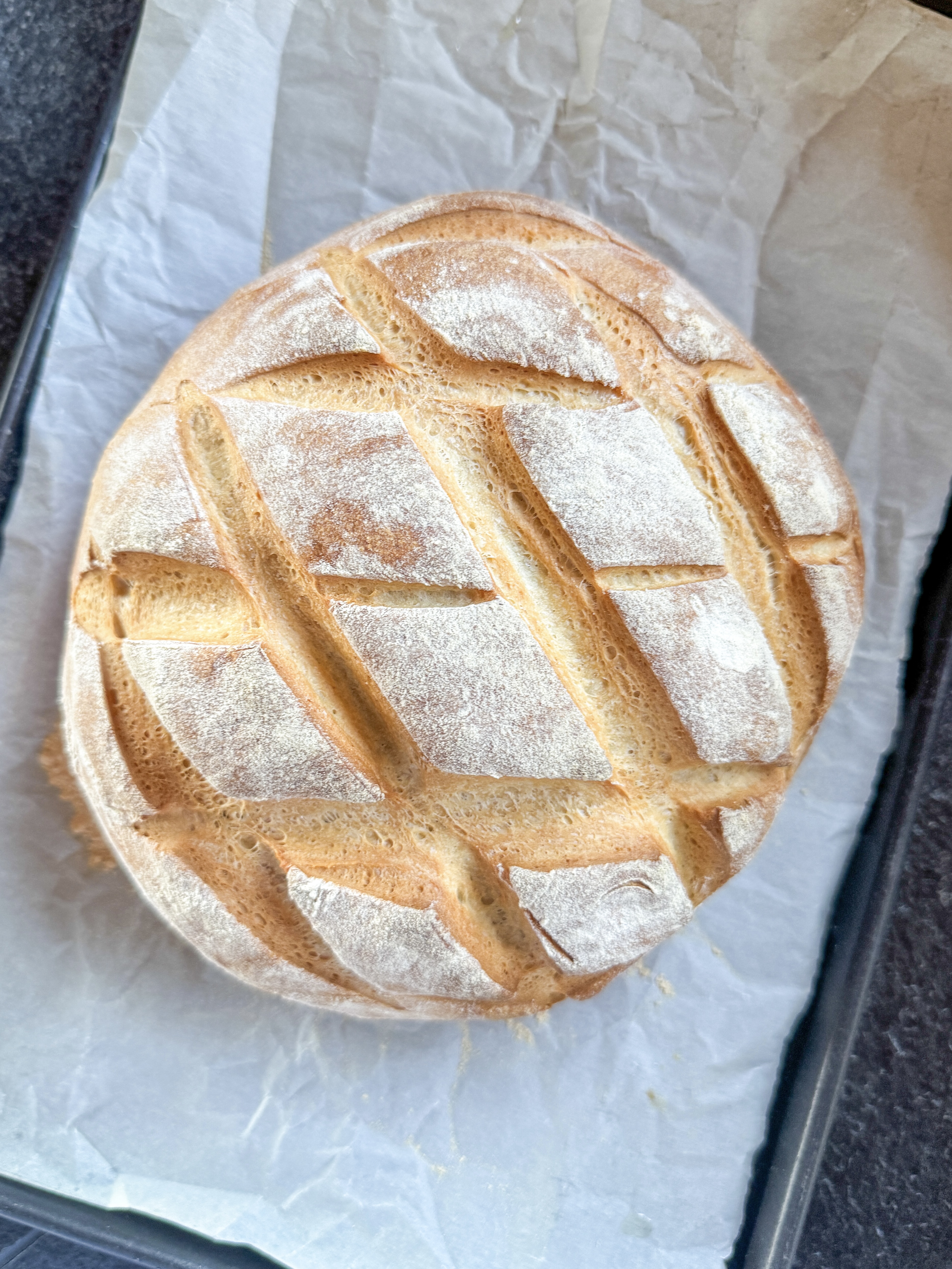
12 Bread!
How long does this bread last?
It is best served on the day it is made. Fortuitously, if you have any left, it is still wonderful the next day and by the third day, it will make great toast. If you don’t want to make such a big loaf, this recipe can be easily halved.
How should this loaf be stored?
Store in a bread tin at room temperature.
Can I freeze this bread?
Yes you can. For best results, freeze the bread when it is as fresh as possible but make sure it has fully cooled. Wrap in a few layers of cling film and place inside a plastic bag and seal it. It is best eaten within 3 months of freezing. Allow it to defrost on the kitchen counter at room temperature.
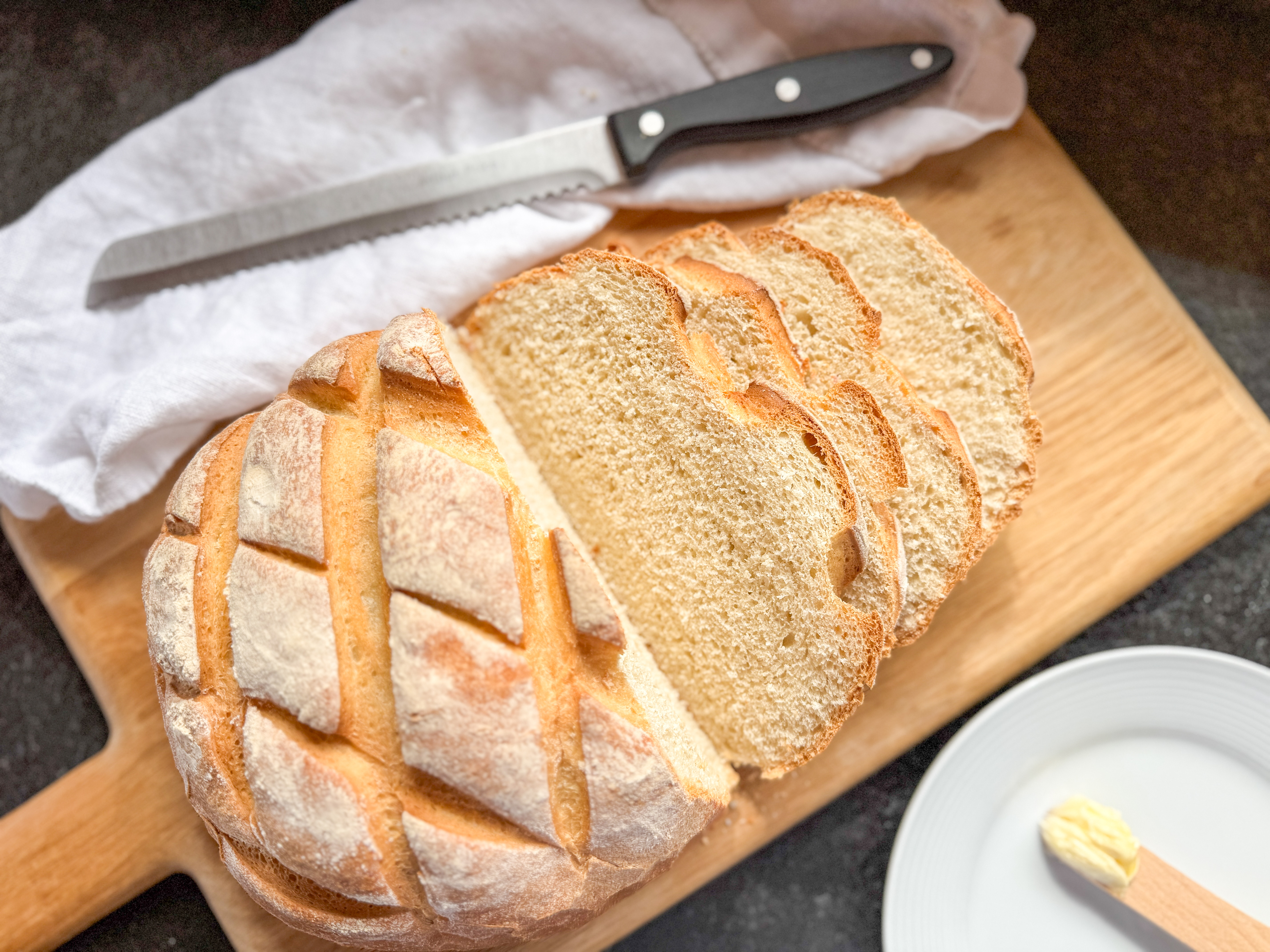
Made this recipe?
If you make this recipe, do please tag me on instagram @daffodil_kitchen. You could also leave a comment in the box directly below the recipe.
Homemade White Bread
Baking bread is wonderfully therapeutic – there is something very satisfying about creating an artisan bakery version of such a staple product, in no time at all. Not only does it taste better, it costs a fraction of the price of shop bought, the house will smell incredible whilst it bakes and, very importantly, it is not full of preservatives. As a result, it doesn’t last as long, but, to be honest, it doesn’t need to! Obviously, it is best served on the day it is made, but it is so good, it will disappear exceedingly quickly.
Makes 1 x 900g/2lb loaf
Ingredients
- 500g strong white flour
- 1 x 7g sachet easy bake dried yeast
- 1½ teaspoons fine salt
- 1 teaspoon caster sugar
- 50g very soft unsalted butter
- 300g – 325g luke-warm water
You will also need:
- 1 – 2 teaspoons of oil (to grease a bowl for the dough to rise in)
- extra flour for kneading and topping
- 1 litre water, for cooking
Instructions
-
Collect together your equipment (see Recipe Notes below) and ingredients.
-
Put the flour, yeast, salt and sugar into the bowl of a freestanding mixer with a dough hook. Stir, add the butter and mix on speed 2, or by hand.
-
Whilst mixing, slowly pour 300ml water in from the side and continue to mix until everything comes together and forms a rough, shaggy dough – around 2 minutes in a mixer. Check the texture of the dough. If it feels dry, add a little more water.
-
When you are happy with the consistency of the dough, continue to mix on speed 2, using the dough hook, for a further 5 minutes, or until the dough is very smooth and comes away cleanly from the side of the bowl. If the dough rides up the hook, take it off and continue to mix. Alternatively, knead by hand for around 10 minutes.
-
When the dough is ready, shape it into a neat ball. Lightly oil a mixing bowl large enough to take the dough when it has doubled in size. Put the dough in the bowl and cover with a lid or cling film. Leave to rise until doubled in size. This normally takes between 1- 2 hours depending on how warm it is. If the room temperature is cold, I put mine in the oven set on dough setting at 42°C and it takes around 2 hours.
-
When it has doubled in size, lightly flour the top of the dough, knock the dough back with your hand and then remove the dough from the bowl onto a lightly floured work surface.
-
Knead to remove the air and then shape into a ball. Place, smooth side up, on a baking parchment lined baking tray, large enough for the dough to double in size.
-
Cover with a damp tea towel or lightly oiled cling film, and set aside to rise until doubled in size. This normally takes around an hour. If the room temperature is cold, I put mine in the oven set on dough setting at 42°C.
-
10 minutes before you are ready to bake the loaf, preheat oven to 230°C/450°F/Gas 8 (fan 210°C) and place a roasting tin in the bottom of the oven.
-
Before cooking, gently rub the top of the dough with 1 – 2 teaspoons flour. Using a very sharp knife, carefully cut diamond shapes into the top of the loaf, around 1cm deep.
-
Place in the centre of a preheated oven and pour ½ litre of cold water into the hot roasting tin. The steam created by this will help to give your loaf a light and crispy crust.
-
Immediately lower the heat to 220°C/425°F/Gas 7 (fan 200°C) and cook for 25 – 30 minutes, or until the loaf is golden. Loosely cover with silver foil for the last 5 – 10 minutes if it is browning too quickly.
-
Tap the bottom of the loaf, if it is cooked it should sound hollow and feel firm. Leave on the baking tray for a couple of minutes and then remove onto a wire rack to cool.
Recipe Notes
Equipment:
- Kitchen scales and measuring spoons
- freestanding mixer
- baking tray lined with baking parchment
- lightly oiled cling film or a damp tea towel
- baking tray – to use for the water on the oven
- wire rack
How long does this bread last?
it is best served on the day it is made. Fortuitously, if you have any left, it is still wonderful the next day and by the third day, it will make great toast. If you don’t want to make such a big loaf, this recipe can be easily halved.
How should this loaf be stored?
Store in a bread tin at room temperature.
Can I freeze this bread?
Yes you can. For best results, freeze the bread when it is as fresh as possible but make sure it has fully cooled. Wrap in a few layers of cling film and place inside a plastic bag and seal it. It is best eaten within 3 months of freezing. Allow it to defrost on the kitchen counter at room temperature.

Passion Fruit Curd
You May Also Like
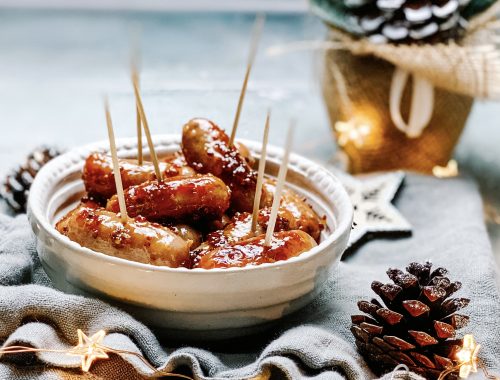
Honey Mustard Cocktail Sausages
28th November 2020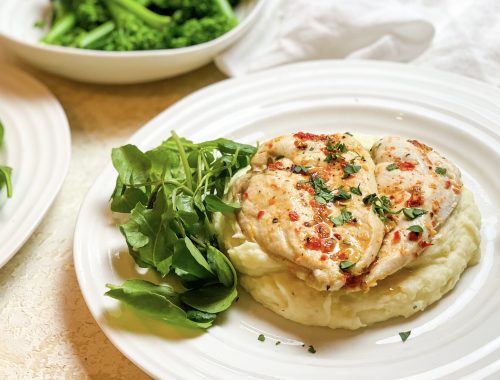
Chilli Chicken and Skordalia
3rd October 2021